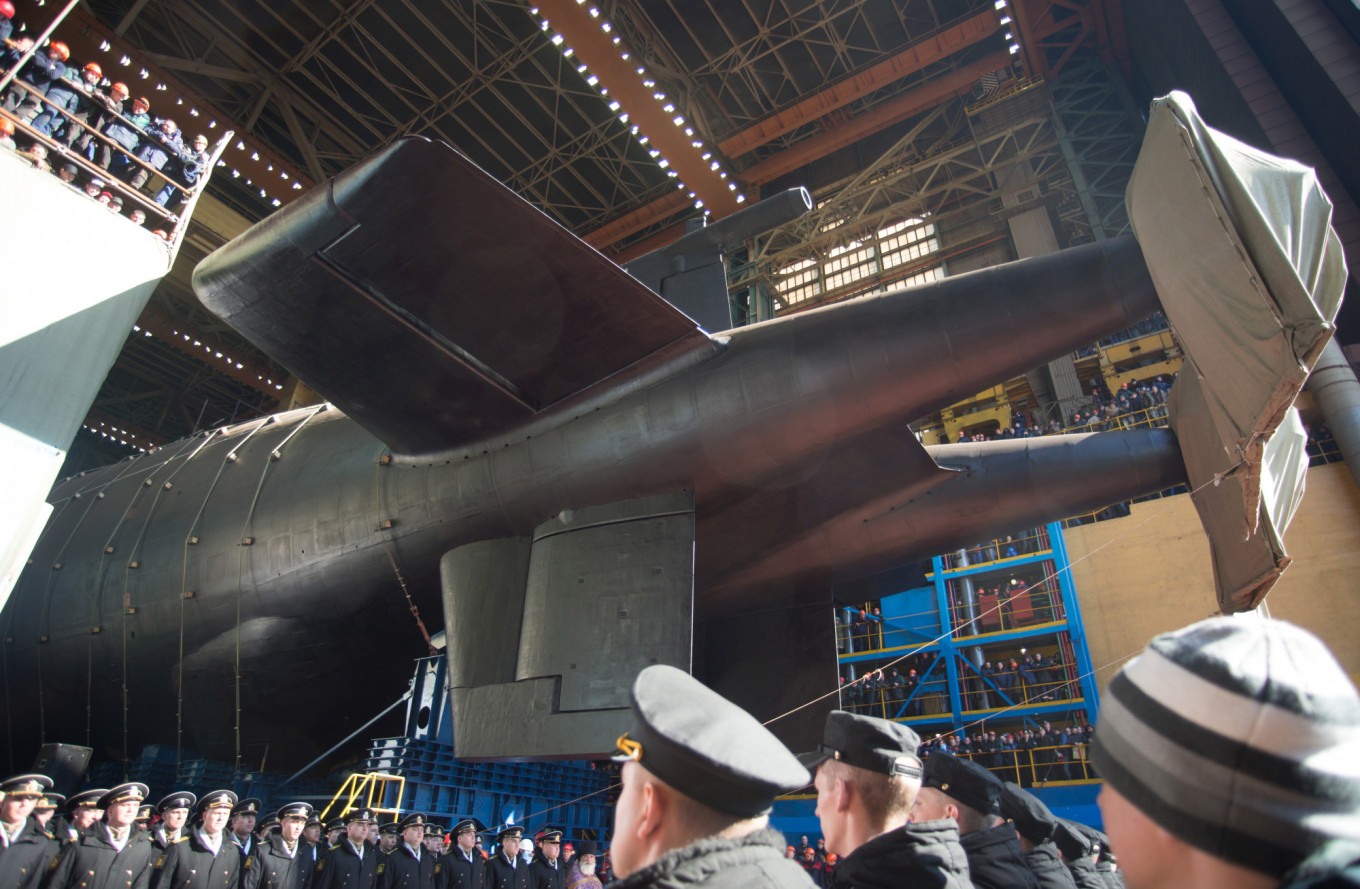
U.S.-based nuclear experts said on Friday they suspected an accidental blast and radiation release in northern Russia this week occurred during the testing of a nuclear-powered cruise missile vaunted by President Vladimir Putin last year.
The Russian Defense Ministry, quoted by state-run news outlets, said that two people died and six were injured on Thursday in an explosion of what it called a liquid propellant rocket engine. No dangerous substances were released, it said. Russia‘s state nuclear agency Rosatom said early on Saturday that five of its staff members died.
A spokeswoman for Severodvinsk, a city of 185,000 near the test site in the Arkhangelsk region, was quoted in a statement on the municipal website as saying that a “short-term” spike in background radiation was recorded at noon Thursday. The statement was not on the site on Friday.
The Russian Embassy did not immediately respond for comment.
Two experts said in separate interviews with Reuters that a liquid rocket propellant explosion would not release radiation.
They said that they suspected the explosion and the radiation release resulted from a mishap during the testing of a nuclear-powered cruise missile at a facility outside the village of Nyonoksa.
“Liquid fuel missile engines exploding do not give off radiation, and we know that the Russians are working on some kind of nuclear propulsion for a cruise missile,” said Ankit Panda, an adjunct senior fellow with the Federation of American Scientists.
Russia calls the missile the 9M730 Buresvestnik. The NATO alliance has designated it the SSC-X-9 Skyfall.
A senior Trump administration official, speaking on condition of anonymity, said he would not confirm or deny that a mishap involving a nuclear-powered cruise missile occurred. But he expressed deep skepticism over Moscow’s explanation.
“We continue to monitor the events in the Russian far north but Moscow’s assurances that ‘everything is normal’ ring hollow to us,” said the official.
“This reminds us of a string of incidents dating back to Chernobyl that call into question whether the Kremlin prioritizes the welfare of the Russian people above maintaining its own grip on power and its control over weak corruption streams.”
The official was referring to the 1986 explosion at the Chernobyl nuclear power plant, in the former Soviet republic of Ukraine, which released radioactive airborne contamination for about nine days. Moscow delayed revealing the extent of what is regarded as the worst nuclear accident in history.
Putin boasted about the nuclear-powered cruise missile in a March 2018 speech to the Russian parliament in which he hailed the development of a raft of fearsome new strategic weapons.
The missile, he said, was successfully tested in late 2017, had “unlimited range” and was “invincible against all existing and prospective missile defense and counter-air defense systems.”
‘Not there by accident’
Jeffrey Lewis, director of the East Asia Non-Proliferation Program at the Middlebury Institute of International Studies, said he believed that a mishap occurred during the testing of the nuclear-powered cruise missile based on commercial satellite pictures and other data.
Using satellite photos, he and his team determined that the Russians last year appeared to have disassembled a facility for test-launching the missile at a site in Novaya Zemlya and moved it to the base near Nyonoksa.
The photos showed that a blue “environmental shelter” — under which the missiles are stored before launching — at Nyonoksa and rails on which the structure is rolled back appear to be the same as those removed from Novaya Zemlya.
Lewis and his team also examined Automatic Identification System (AIS) signals from ships located off the coast on the same day as the explosion. They identified one ship as the Serebryanka, a nuclear fuel carrier that they had tracked last year off Novaya Zemlya.
“You don’t need this ship for conventional missile tests,” Lewis said. “You need it when you recover a nuclear propulsion unit from the sea floor.”
He noted that the AIS signals showed that the Serebryanka was located inside an “exclusion zone” established off the coast a month before the test, to keep unauthorized ships from entering.
“What’s important is that the Serebryanka is inside that exclusion zone. It’s there. It’s inside the ocean perimeter that they set up. It’s not there by accident,” he said. “I think they were probably there to pick up a propulsion unit off the ocean floor.”
Lewis said he didn’t know what kind of radiation hazard the Russian system poses because he did was unaware of the technical details, such as the size of the nuclear reactor.
But he noted that the United States sought to develop a nuclear-powered missile engine in the 1950s that spewed radiation.
“It represented a health hazard to anyone underneath it,” he said.
